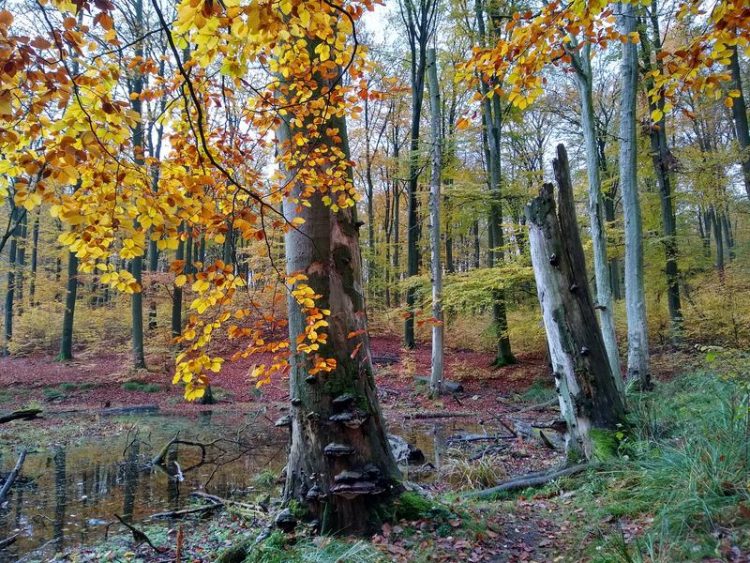Strengthening regional development through old growth beech forests in Europe

Beech forest in Grumsin (Brandenburg, Germany) © HNEE
90,000 hectares of old beech forests, divided into 78 parts in more than 40 protected areas in twelve European countries – This is the most complex international site in the UNESCO portfolio. The World Heritage Site in its current pan-European form exists only since 2017.
It offers a diverse potential for nature conservation and sustainable development of regions and municipalities. However, this potential must develop fur-ther, as the international team, working together in the new EU project “BEECH POWER” for the next three years, is suggesting. For example, local administrative units are confronted with some challenges when it comes to the management of buffer zones, the areas surrounding the protected area.
“In exchange with all stakeholders, such as forest owners and communities, we want to find solutions together in order to develop clear and effective recommendations for action,” says HNEE project coordinator Marccus Waldherr.
The project BEECH POWER, under the “Interreg Central Europe” programme, brings together scientists, practical experts and the citizens from the respective regions. The management of the protected areas is to be improved based on three work packages. These include;
• Strengthening the communities around the World Heritage Sites as role models for ecosystem-based sustainable development that benefit from the World Heritage Site.
• Development of a sustainable model for the management of buffer zones around the World Heritage beech forests
• Development of a quality standard and certification system for the management of old beech forests
A first workshop took place in Angermünde (Brandenburg), where various interest groups discussed the further development of the Grumsin beech forest and the way it is anchored in the region. The association Weltnaturerbe Grumsin e.V., whose initiative led to the application for the European BEECH POWER project, also took part in this workshop. Marcus Waldherr says “The project means a concrete implementation of the European idea, since we all live in one and the same ecosystem, for which it is worthwhile to stand up across borders”.
About the project:
Duration: 01.04.2019 – 31.03.2022
Funding amount: 1,864,328.98 Euro
Funding programme: Interreg Central Europe (EU) and ILB (Investitionsbank des Landes Brandenburg)
Project partners: Centre for Econics and Ecosystem Management at Eberswalde University for Sustainable Development (DE), European Wilderness Society (AT), Kalkal-pen National Park (AT), Paklenica National Park (HR), Angermünde Municipality (DE), Slovenia Forest Service (SI), and National Forest Centre (SK)
Marcus Waldherr
Project coordinator
Centre for Econics and Ecosystem Management
Telefon: (03334) 567-284
E-Mail: marcus.waldherr@hnee.de
https://european-beech-forest.network/ European Beech Forest Network
http://www.interreg-central.eu/Content.Node/BEECH-POWER Interreg Central Europe Priority: Natural and cultural resources
http://www.centreforeconics.org Centre for Econics and Ecosystem Management
Media Contact
All latest news from the category: Agricultural and Forestry Science
Newest articles

High-energy-density aqueous battery based on halogen multi-electron transfer
Traditional non-aqueous lithium-ion batteries have a high energy density, but their safety is compromised due to the flammable organic electrolytes they utilize. Aqueous batteries use water as the solvent for…

First-ever combined heart pump and pig kidney transplant
…gives new hope to patient with terminal illness. Surgeons at NYU Langone Health performed the first-ever combined mechanical heart pump and gene-edited pig kidney transplant surgery in a 54-year-old woman…

Biophysics: Testing how well biomarkers work
LMU researchers have developed a method to determine how reliably target proteins can be labeled using super-resolution fluorescence microscopy. Modern microscopy techniques make it possible to examine the inner workings…





















